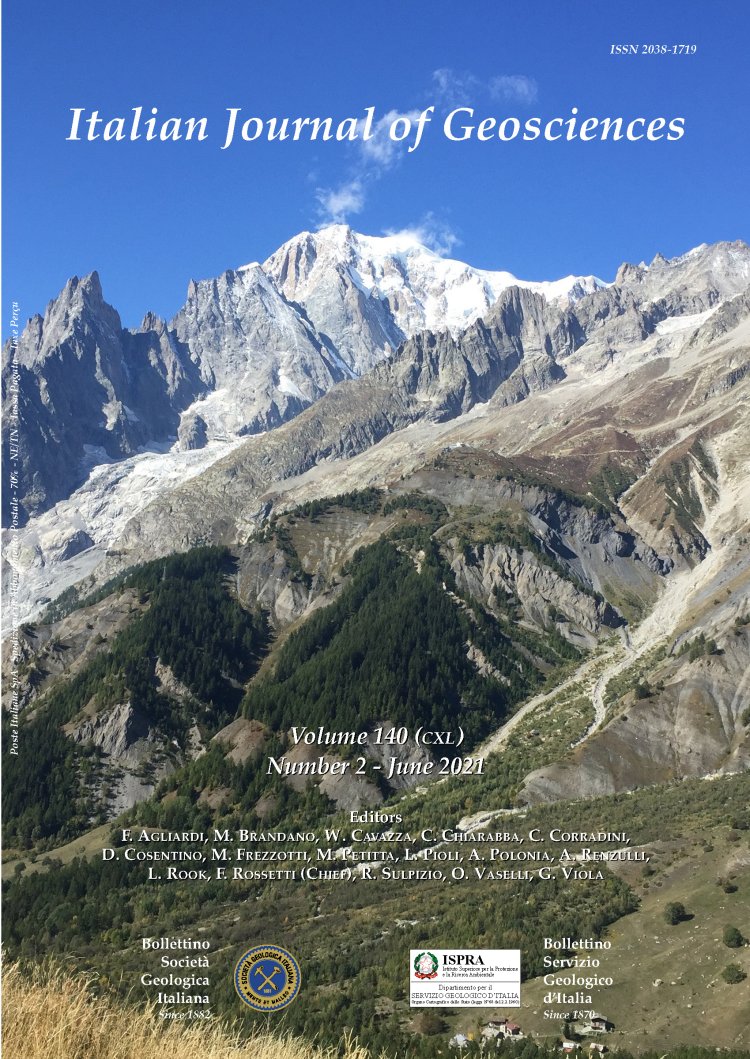

150 years of plans, geological survey and drilling for the Fréjus to Mont Blanc tunnels across the Alpine chain: an historical review
Giorgio V. Dal Piaz (1) & Alessio Argentieri (2)
(1) Società Geologica Italiana, Sezione di Storia delle Geoscienze.
(2) Città Metropolitana di Roma Capitale, Dip. VI- Servizio 3 Ge- ologico e difesa del suolo, protezione civile in ambito metropolitano - Società Geologica Italiana, Sezione di Storia delle Geoscienze. Corresponding author e-mail: gv.dalpiaz@gmail.com
Volume: 140 (2021) f.2
Pages: 169-204
Abstract
Since Roman age, people living on both sides of the Alps had been seeking different ‘north-west passages’, first overriding the mountains and then moving under them. The first idea of a tunnel under the Mont Blanc was envisaged by de Saussure in 1787. In the 19th century a growing railway network played a fundamental role for the Industrial Revolution, but was hampered for the southern countries by the barrier of the Alps, so that modern transalpine railways became essential for the Reign of Sardinia. This paper presents an historical review of first suggestions, projects, field survey, failed attempts and successful drilling works across the Alps, from the Frejus (1871), San Gottardo (1882) and Simplon (1906) railway tunnels to the Grand St Bernard (1964) and Mont Blanc (1965) highway tunnels, relived within the advances of regional geology and mapping. The Fréjus tunnel was conceived by Medal, projected by Maus between Modane and Bardonèche and approved by a ministerial commission, but it was abandoned due to the insurrection of 1848. Later, it was taken up again, developed by Sommeiller, promoted by Cavour himself, and approved in 1857. Technical management was assigned to Sommeiller, Grattoni and Grandis. Fréjus was the first, longest and innovating railway tunnel in the world: drilling began in 1857 and ended in December 1870, thanks to a new drilling machine powered by compressed-air. Its inauguration took place on September 1871. When the Fréjus drilling was still in progress, John Fell built a mountain railway between Piedmont and Savoy, through the Mont Cenis, following the Napoleonic road. During its four years of work (1868- 1871) it managed to transport about 100,000 travellers, but it was forced to close down when the Fréjus railway tunnel was opened. The geological advances and mapping in the Western Alps by the mid-19th century provided information and reliable tools for better planning of great engineering works, but tunnel designs were not always based on a geological survey: the main exceptions were represented by GiorDano (Gottardo, 1881) and Baretti (Mont Blanc, 1880). The former tunnel was drilled, the latter was not accomplished, as other projects were instead preferred across the Western Alps, Colle di Tenda (1898) and then Simplon (1906). After new hopes, the geological study on four project tunnels under the Mont Blanc by Franchi, Kilian and Jacob (Franchi et alii, 1908), and further disappointments, decisive moves to achieve the underground connection between Courmayeur and Chamonix were made by Dino Lora Totino who requested a project to Vittorio Zignoli. Meanwhile, a geological survey for radioactive minerals was promoted by CNRN on the Italian side of the Mont Blanc: field work was performed by Baggio and his staff, and their best result was the discovery of mylonitic-cataclastic shear zones crossing the tunnel route. Their work continued during the drilling inside the Italian part of the Mont Blanc motorway tunnel, started in 1959 and ended in 1962: systematic geological, structural and application data were acquired by Mezzacasa during excavation and studied by Baggio, Elter and Malaroda, whereas the French side was surveyed by Gudefin and studied by Vittel and others after the end of excavation. This paper is meant to be a grateful tribute to all scientist and technicians that, thanks to geological studies, maps and sections, allowed deep mountains to be metaphorically transparent, thus making it easier and safer to physically go through them.
Geology and tunneling have close interactions and mutual benefits. Preventive geology allow to optimize the technical design, reduce costs and minimize bitter surprises. Conversely, systematic survey during excavation of deep tunnels has provided innovative data for the advance of geosciences.
Keywords
Get Full Text